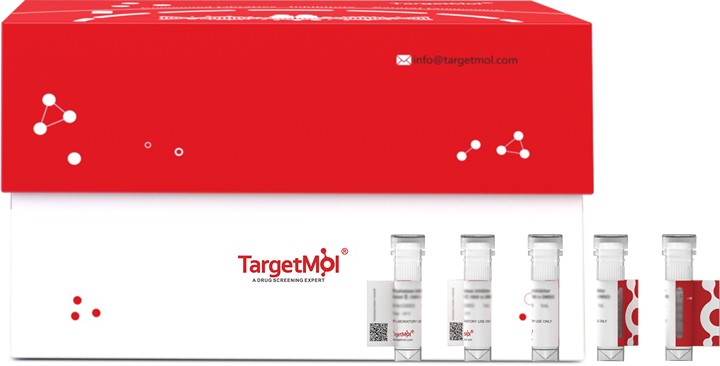- Remove All
 Your shopping cart is currently empty
Your shopping cart is currently empty
Protein Kinase D2/PRKD2 Protein, Human, Recombinant (His & GST)
Serine/threonine-protein kinase D2, also known as PRKD2 and PKD2, is a cytoplasm and membrane protein that belongs to the protein kinase superfamily, CAMK Ser/Thr protein kinase family and PKD subfamily. PRKD2 / PKD2 is widely expressed. It contains one PH domain, two phorbol-ester/DAG-type zinc fingers and one protein kinase domain. PRKD2 / PKD2 is activated by DAG and phorbol esters. Phorbol-ester/DAG-type domains bind DAG, mediating translocation to membranes. Autophosphorylation of Ser-71 and phosphorylation of Ser-76 by PKC relieves auto-inhibition by the PH domain. PRKD2 / PKD2 converts transient diacylglycerol (DAG) signals into prolonged physiological effects, downstream of PKC. Involved in resistance to oxidative stress.

Protein Kinase D2/PRKD2 Protein, Human, Recombinant (His & GST)
| Pack Size | Price | Availability | Quantity |
|---|---|---|---|
| 50 μg | $498 | 7-10 days |
Product Information
| Biological Activity | The specific activity was determined to be >30 nmol/min/mg using synthetic CREBtide peptide (KRREILSRRPSYR) as substrate. |
| Description | Serine/threonine-protein kinase D2, also known as PRKD2 and PKD2, is a cytoplasm and membrane protein that belongs to the protein kinase superfamily, CAMK Ser/Thr protein kinase family and PKD subfamily. PRKD2 / PKD2 is widely expressed. It contains one PH domain, two phorbol-ester/DAG-type zinc fingers and one protein kinase domain. PRKD2 / PKD2 is activated by DAG and phorbol esters. Phorbol-ester/DAG-type domains bind DAG, mediating translocation to membranes. Autophosphorylation of Ser-71 and phosphorylation of Ser-76 by PKC relieves auto-inhibition by the PH domain. PRKD2 / PKD2 converts transient diacylglycerol (DAG) signals into prolonged physiological effects, downstream of PKC. Involved in resistance to oxidative stress. |
| Species | Human |
| Expression System | Baculovirus Insect Cells |
| Tag | His, GST |
| Accession Number | Q9BZL6-1 |
| Synonyms | protein kinase D2,PKD2,nPKC-D2,HSPC187 |
| Construction | A DNA sequence encoding the amino acid sequence (Met 1-Leu 878) of human PRKD2 (NP_057541.2) was fused with the N-terminal polyhistidine-tagged GST tag at the N-terminus. Predicted N terminal: Met |
| Protein Purity | > 82 % as determined by SDS-PAGE |
| Molecular Weight | 124 kDa (predicted); 120 kDa (reducing conditions) |
| Endotoxin | < 1.0 EU/μg of the protein as determined by the LAL method. |
| Formulation | Supplied as sterile 50 mM Tris, 500 mM NaCl, 0.5 mM PMSF, 10% glycerol, pH 8.0. |
| Reconstitution | A Certificate of Analysis (CoA) containing reconstitution instructions is included with the products. Please refer to the CoA for detailed information. |
| Stability & Storage | It is recommended to store the product under sterile conditions at -20°C to -80°C. Samples are stable for up to 12 months. Please avoid multiple freeze-thaw cycles and store products in aliquots. |
| Shipping | Shipping with blue ice. |
| Research Background | Serine/threonine-protein kinase D2, also known as PRKD2 and PKD2, is a cytoplasm and membrane protein that belongs to the protein kinase superfamily, CAMK Ser/Thr protein kinase family and PKD subfamily. PRKD2 / PKD2 is widely expressed. It contains one PH domain, two phorbol-ester/DAG-type zinc fingers and one protein kinase domain. PRKD2 / PKD2 is activated by DAG and phorbol esters. Phorbol-ester/DAG-type domains bind DAG, mediating translocation to membranes. Autophosphorylation of Ser-71 and phosphorylation of Ser-76 by PKC relieves auto-inhibition by the PH domain. PRKD2 / PKD2 converts transient diacylglycerol (DAG) signals into prolonged physiological effects, downstream of PKC. Involved in resistance to oxidative stress. |
Dose Conversion
Sci Citations
Calculator
Tech Support

Copyright © 2015-2025 TargetMol Chemicals Inc. All Rights Reserved.


